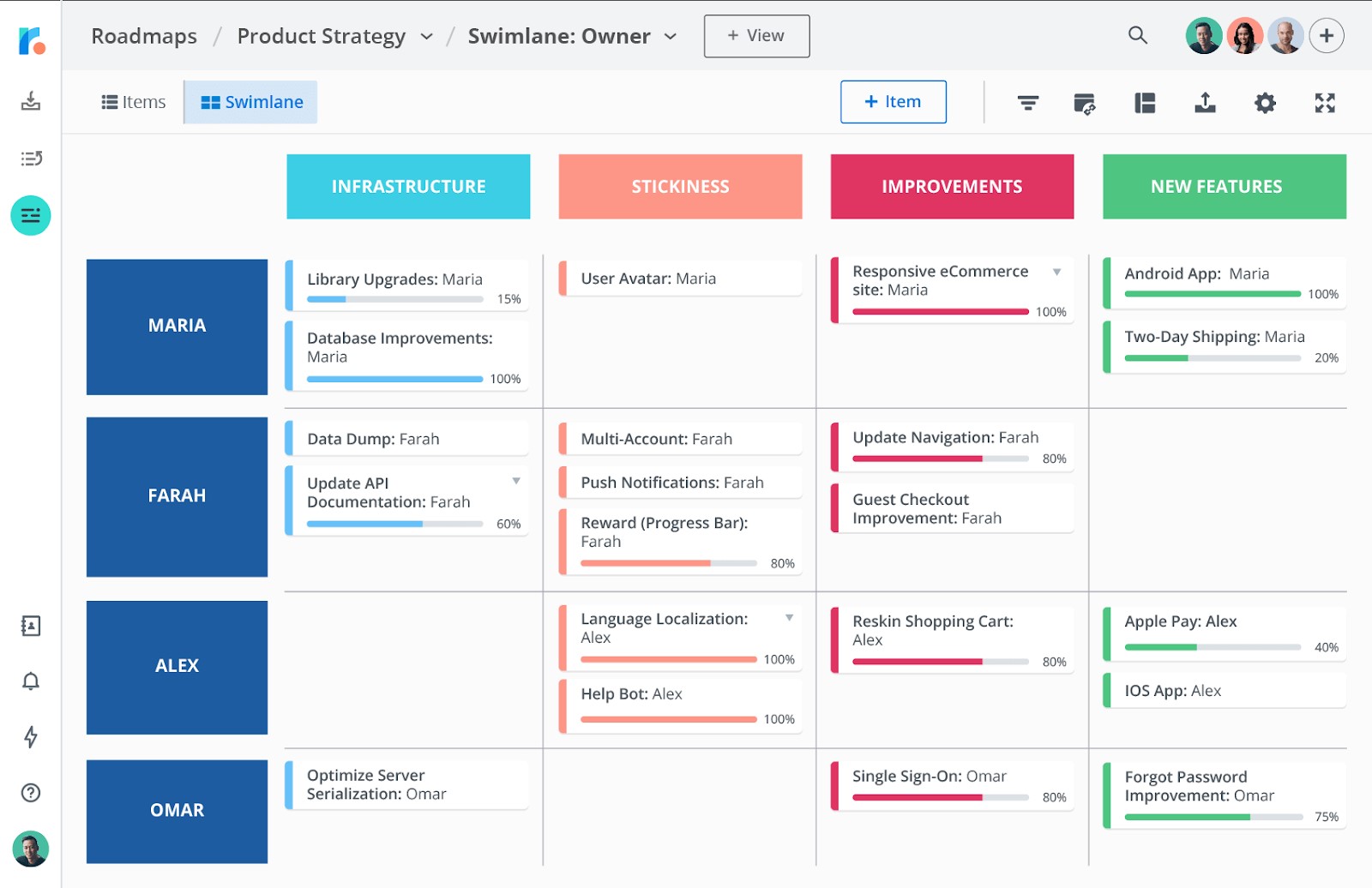To put it simply, you can’t cut corners when it comes to planning your app’s development process. (Well, technically, you can… but I don’t recommend it.)
A product development roadmap is a strategic document that explains a product’s vision and development strategy. This roadmap is an absolutely essential component of project management for developing mobile web apps.
Without a reference point to lay everything out clearly and guide the process, you, your team, and your partners will find yourselves knee-deep in confusion, frustration, and complications.
Now that I’ve lectured you on the importance of a solid product development roadmap, let’s get to the juicy part: how to create one that really works and leads your initiative to success.
Before creating a roadmap for the development of a mobile web app, there are 6 steps you should follow.
1. Know the primary “why” behind your product
You’ve probably heard “start with why” a million times by now. Well, this is a million and one. I’m saying it again because it’s so important for the trajectory and potential success of your entire project (possibly even your entire company).
Your “why” is your North Star. It aligns every player, whether they’re your internal team, your partners, or other stakeholders.
More importantly, understanding your purpose—and the value you’re bringing to the table—is the magic ingredient that aligns your customers with your vision. Think about it: if you don’t understand why customers will be willing to pay for your product, how can you be sure you’ll succeed at all?
2. Know the audience for the mobile web application roadmap
I’ve seen this too many times to count: an innovator has a brilliant new app idea. They hit the ground running, all pistols firing—they’re so confident that they’ll succeed that they don’t take the time to do market research or validate their idea.
Guess what happens? They flop. Turns out that just because you think your idea is amazing, that doesn’t mean that the market will agree with you.
Take the time to really understand your audience: their daily lives, their habits and preferences, and the tools they’re currently using to get the same job done. Will your idea truly be worth it to them? Will they be willing to buy it, on top of spending the time to get over the learning curve and integrate it into their lives?
3. Pinpoint the app’s key features and precise functions
You won’t have much of a roadmap without the road, will you? You’ll need a laser-sharp understanding of your key features and functions.
Going a step further, you should know the priority of those features and functions. Which ones will be released first, and what are your rough timelines for making that happen? Knowing the order of releases allows other business departments to plan accordingly.
We recommend for the first feature be built completely so you can test the waters and gain feedback from users.
Remember, your development should be iterative, using new information and pivoting as you need throughout the development lifecycle.
4. Create a comprehensive set of measures to gauge advancement
You know the old saying, “KPIs are the spice of life.”
Okay, I just made it up. But the point is that KPIs (key performance indicators) are a critical strategy when you’re operating on multiple levels with multiple players. In order to unite everyone toward a common goal, and to ensure that everyone’s working toward that goal in unison, you’ll need to agree on how it can and will be done.
Ideally, you’ll be able to set up KPIs for each team or department (or even individual) involved in the mobile app development process. After all, different players will have different tasks, which equal different milestones along the way.
Another layer for setting up KPIs is to base them on each feature or function of the app. This will help to keep your development process mean and lean.
5. Decide on the tools needed to create the roadmap and the format you’ll use
There are tons of tools and platforms out there to help build and manage your roadmaps. This is great news if you’re not a wizard when it comes to old-school, manual spreadsheets and checklists.
Here are a few of the top road mapping tools for mobile app development:
Here’s a screenshot of Roadmunk so you can visualize how these tools work:

Source: roadmunk.com
As for the format, there are two main types: agile and waterfall. Here at Dazlab, we try and use a hybrid of the two. It’s all agile in a sense, as everyone has the freedom to change things up and be flexible. But we also like to have a bit of structure in place, which is where our unique approach comes in.
We have two sprints running simultaneously. The first one is all about planning for the next, so we can really nail down those designs and specs and get the client to give us the thumbs up before we start building.
The second sprint is where the actual software development takes place. By having a clear plan and scope in place, we can minimize delays and work more efficiently.
While some argue that agile methodology allows for greater flexibility and less planning, we’ve found that taking the time to establish a strong foundation upfront results in a smoother development process overall.
That’s our go-to approach, and we’re pretty chuffed with the results.
6. Update the data on the roadmap
This step should really go without saying, but it’s important enough to say anyway. Whichever tools and formats you use to create your roadmap, make sure they’re something you’ll want to stick with.
It’s non-negotiable to keep your roadmap updated with every single item that gets done, otherwise, you’re kind of defeating the purpose of having the roadmap to begin with.
Another consideration is to keep an eye on the amount and nature of the info you’re including. Data that are too specific or irrelevant may overwhelm your team, while data that are vague or under-detailed can slow down the development process and overall team cohesion.
Set the stage for smooth development
When you have all the right pieces in place, you’re ensuring a smooth and streamlined path to bringing your app to life. The key to this is a solid roadmap.
Just be sure that you’re following the 6 steps we discussed here so that everyone on your internal and external teams are on the same page. When you can manage expectations and minimize complications from the get-go, you’re already on the path to success.




